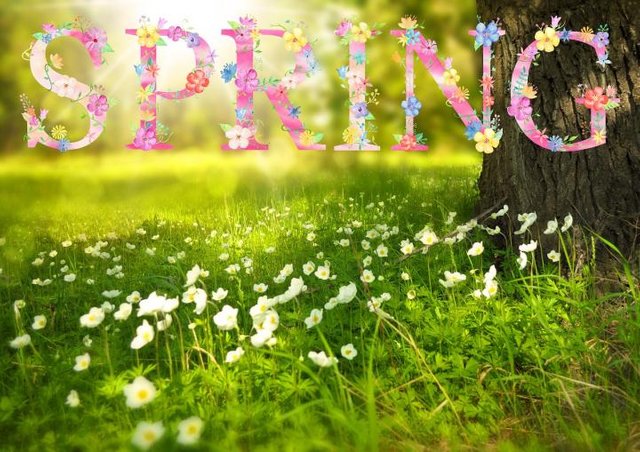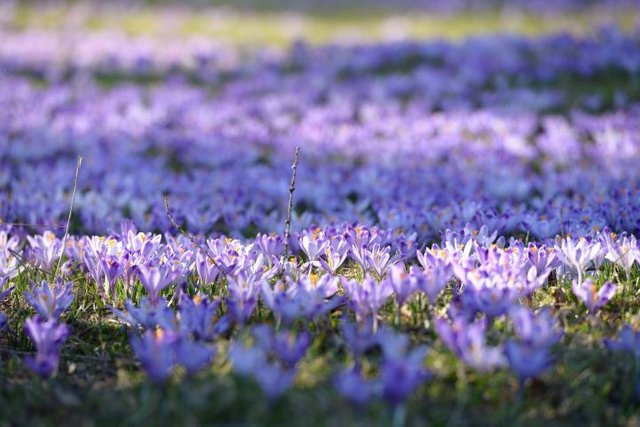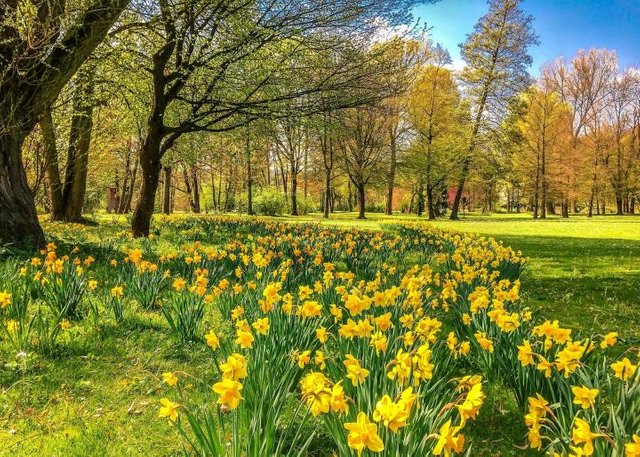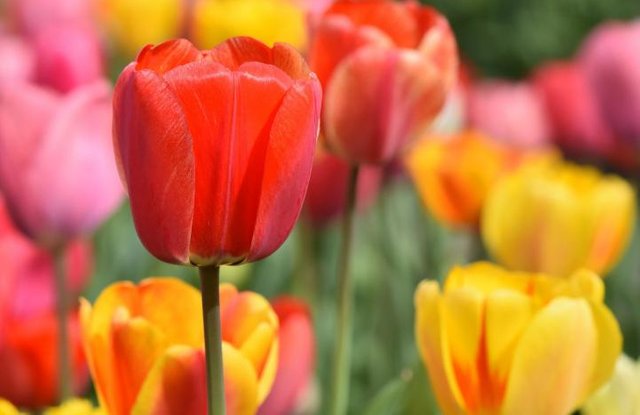CELEBRATE THE VERNAL EQUINOX AND THE START OF SPRING!

In 2021, the spring equinox occurs on Saturday, March 20. This event marks the astronomical first day of spring in the Northern Hemisphere. What does equinox mean? What happens on the equinox? What determines the first day of spring? Before you try to balance that egg, read this!

WHAT IS THE SPRING EQUINOX?
In the Northern Hemisphere, the March equinox (aka spring equinox or vernal equinox) occurs when the Sun crosses the equator line, heading north. This event marks the start of spring in the northern half of the globe. After this date, the Northern Hemisphere begins to be tilted more toward the Sun, resulting in increasing daylight hours and warming temperatures. (In the Southern Hemisphere, it’s the opposite: the March equinox marks the start of autumn, as the Southern Hemisphere begins to be tilted away from the Sun.)
WHEN IS THE FIRST DAY OF SPRING?
In 2021, the March equinox happens on Saturday, March 20, at 5:37 A.M. EDT. In the Northern Hemisphere, this date marks the start of the spring season.
In the Southern Hemisphere, the March equinox marks the start of autumn, while the September equinox marks the start of spring.
SPRING EQUINOX DATES AND TIMES
Year Spring Equinox (Northern Hemisphere)
2021 Saturday, March 20, at 5:37 A.M. EDT
2022 Sunday, March 20, at 11:33 A.M. EDT
2023 Monday, March 20, at 5:24 P.M. EDT
2024 Tuesday, March 19, at 11:06 P.M. EDT

WHAT DOES SPRING “EQUINOX” MEAN, EXACTLY?
The word equinox comes from the Latin words for “equal night”—aequus (equal) and nox (night).
On the equinox, the length of day and night is nearly equal in all parts of the world.
With the equinox, enjoy the increasing sunlight hours, with earlier dawns and later sunsets. See your personalized Sun rise and set calculator.
WHAT HAPPENS ON THE MARCH EQUINOX?
On the March equinox, the Sun crosses the celestial equator going south to north. It’s called the “celestial equator” because it’s an imaginary line in the sky above the Earth’s equator.
If you were standing on the equator, the Sun would pass directly overhead on its way north.
Equinoxes are the only two times a year that the Sun rises due east and sets due west for all of us on Earth!
While the Sun passes overhead, the tilt of the Earth is zero relative to the Sun, which means that Earth’s axis neither points toward nor away from the Sun. (Note, however, that the Earth never orbits upright, but is always tilted on its axis by about 23.5 degrees.)

After the spring equinox, the Northern Hemisphere tilts toward the Sun. Although in most locations (the North Pole and Equator being exceptions) the amount of daylight had been increasing each day after the winter solstice, after the spring equinox, many places will experience more daylight than darkness in each 24-hour day. The amount of daylight each day will continue to increase until the summer solstice in June, in which the longest period of daylight occurs.
SPRING EQUINOX FAQS
Q: DOES SPRING BEGIN ON MARCH 1 OR ON THE EQUINOX?
A: Well, both. The answer depends on your definition of “spring.” Both dates are accurate; they’re just from different perspectives. We’ll explain …
Astronomically speaking, the first day of spring is marked by the spring equinox, which falls on March 19, 20, or 21 every year. The equinox happens at the same moment worldwide, though our clock times reflect a different time zone. And, as mentioned above, this date only signals spring’s beginning in the Northern Hemisphere; it announces fall’s arrival in the Southern Hemisphere.
Interestingly, due to time zone differences, there isn’t a March 21 equinox in mainland U.S. during the entire 21st century! We won’t see a March 21 equinox again until 2101.
Meteorologically speaking, the official first day of spring is March 1 (and the last is May 31). Weather scientists divide the year into quarters to make it easier to compare seasonal and monthly statistics from one year to the next. The meteorological seasons are based on annual temperature cycles rather than on the position of Earth in relation to the Sun, and they more closely follow the Gregorian calendar. Using the dates of the astronomical equinoxes and solstices for the seasons would present a statistical problem, as these dates can vary slightly each year.
Q: ARE DAY AND NIGHT EQUAL ON THE EQUINOX?
A: No, but they are close to equal. In reality, day and night are not exactly equal at the equinox for two reasons: First, daytime begins the moment any part of the Sun is over the horizon, and it is not over until the last part of the Sun has set. If the Sun were to shrink to a starlike point and we lived in a world without air, the spring and fall equinoxes would truly have ‘equal nights.’
Q: ACCORDING TO FOLKLORE, YOU CAN STAND A RAW EGG ON ITS END ON THE EQUINOX. IS THIS TRUE?
A: This egg folklore became popular in 1945 following a LIFE article about the spring adage. “The origins of this myth are attributed to stories that the ancient Chinese would create displays of eggs standing on end during the first day of spring,” John Millis, assistant professor of physics and astronomy at Anderson University. “The ancient Chinese celebrated the first day of spring about six weeks earlier than the equinox” so it’s not just on the equinox itself.
As with most folklore, it’s only partly true. It should be balance an egg on its end but also it’s possible to balance an egg on other days, too.

Folklore or not, this egg trick sounded like fun to us. One spring, a few minutes before the vernal equinox, several Almanac editors tried this trick. For a full workday, 17 out of 24 eggs stood standing. Three days later, we tried this trick again and found similar results. Perhaps 3 days after the equinox was still too near. Perhaps the equinox has nothing to do with it. Perhaps we just don’t like to take ourselves too seriously!
Try this yourself and let us know what happens. (Tip: You’ll probably have better luck balancing the egg if you use a rough surface or an egg that has a bumpy end.)
Q: WHICH DAY HAS THE MOST SUNLIGHT IN NORTH AMERICA?
A: The Summer or June Solstice is called the “longest” day of the year! The date of the longest day actually varies between June 20 and June 22, depending on the year, and the local time zone. By “longest day,” we mean the day that gets the most daylight (versus darkness).
HOW DO YOU CELEBRATE THE VERNAL EQUINOX?
To us, the vernal equinox signals new beginnings and nature’s renewal in the Northern Hemisphere!
Many cultures celebrate spring festivals, like Easter and Passover.
Observe nature around you!
Are worms and grubs reappearing? (The March Full Moon is called the “Worm Moon” for this very reason!)
Watch the arc of the Sun across the sky as it shifts toward the north. Birds are migrating northward, along with the path of the Sun.
Are you noticing that the days are getting longer? Did you know that the increasing sunlight is what triggers birds to sing? Cool, eh? Enjoy our Bird Songs page.
Are the daffodils poking up their heads? Trees, shrubs, and flowers are sensitive to temperature and day-length, too! Since ancient days, people have used them as indicators of when the weather is right for planting. For example: Blooming crocus are your cue to plant radishes, parsnips, and spinach. See more of nature’s signs.
Can you feel the Sun getting stronger? The longer days bring high temperatures. Both we and the animals around us strip off our clothes and heavy coats!
Are you getting itchy to get outdoors? March is time to start gardens and sow seeds in many regions. See the best planting dates according to your local frost dates or our Vegetable Gardening for Beginners guide for gardening tips!
Are you craving fresh foods after a long winter? A Spring Tonic, using the early greens of spring, may be just the thing you need! Also, find some new spring recipes using what’s fresh and seasonal!
ANCIENT EQUINOX TRADITIONS: THE SNAKE OF SUNLIGHT
Scientific explanation aside, our ancestors were more connected to the Sun than we are today. They observed its pathway across the sky; they tracked how the sunrise, sunset, and day length changed, using the Sun (and Moon) as a clock and calendar.
There are many ancient sites that mark the equinoxes (and solstices). One of the most famous ancient Spring equinox celebrations was at Chichen Itza in Mexico. The Mayans built a huge pyramid around the year A.D. 1000. The play of the Sun’s light on it signals the beginning of the seasons. On the spring equinox, it looks like a huge snake is slithering down the steps. Mayans called this day “the return of the Sun serpent.”